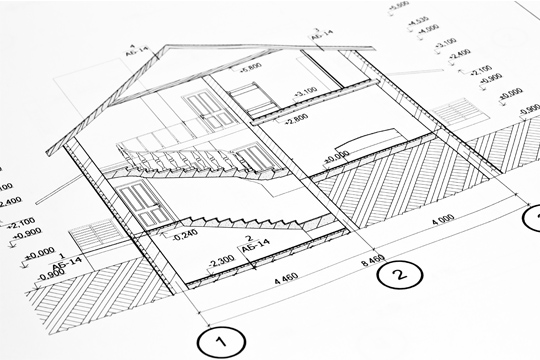Did you know that you can make changes to your home without the need for planning permission? Under Permitted Development Rules, homeowners can make certain changes to their homes without going through the often lengthy and costly process of getting planning permission. This can include erecting a fence, building a conservatory, or converting the loft into a livable space.
However, homeowners should be sure to check what is and isn’t allowed under permitted development rights, as some restrictions are in place. In addition, there are differences in England, Scotland, Wales and Northern Ireland.
What are Permitted Development Rules? What Do They Cover?
Permitted Development Rules are a set of rules that allow homeowners to make certain changes to their homes, either to the outside or inside. In other words, they are an automatic grant of planning permission.
The outside changes that can be made include creating or extending a side extension, building a porch over the front door, converting an outbuilding to create an extra living space. It is also usually possible to reduce the size of a rear garden by up to 50 per cent by adding a hard surface.
There are also regulations affecting the roof slope, height for a dual-pitched roof, the provision of adequate light and flooding risks.
The main inside changes that can be made include:
- Installing lights, ventilation or extractor fans
- Creating loft conversion.
- Creating or extending a conservatory and installing a satellite dish.
Homeowners should be aware that some of these changes may not be allowed in every home. And it is always advisable to check that the changes you wish to make are permitted without an additional planning application.
What can’t I change without going to my local planning office?
There are some rules about what you cannot do under the Permitted Development Rules. This means that you can’t change your home to use it for a different purpose.
For example, you must go through the planning process to turn an annexe into the main house or change an office into a living space. Or, suppose your home is split into flats. In that case, you must go to the planning authority for permission to change it back into a single dwelling.
Also, there are restrictions on how much of the exterior of your property you can change. For example, homeowners cannot build an additional storey on their home or more than a three-metre wall height without planning permission. However, a fast-track system is in place for a two-storey extension on homes.
What can I do on my land?
In addition to the above changes you can make to your home, Permitted Development Rules also allow you to change how you use your land.
Things homeowners can do with their land include:
- Building a garage
- Erecting fences and walls (although height restrictions apply).
- Adding hardstanding to your driveway or path
- Digging ponds or creating new flowerbeds.
Although homeowners can make these changes, this doesn’t necessarily mean you can build on your land. It’s vital to ensure that the development won’t cause harm to the surrounding land.
How do you go about applying for permitted development status for your project?
You’ll need to submit a prior notification for your project. This is basically an application that states what you want to do with your land and home. You must submit the application before starting any building work. Otherwise, the build could be deemed unlawful.
Also, note that there are different prior notification requirements for homeowners and builders. Therefore, always check what type of application you need for your project.
If you’ve already started building work, homeowners should contact their local council to see if they need planning permission.
If you’re unsure what Permitted Development Rules allow you to do, contact your local council before making any structural or significant changes to your home or land.
What are the consequences of breaching permitted planning rules?
Homeowners who breach Permitted Development Rules may be forced to undo any work they have done, even if this has already been completed.
If you breach the rules, you may be fined or ordered to remove your building. However, it’s worth noting that even if you don’t apply for any prior notification, it doesn’t mean that you won’t need planning permission. It all depends on how much of your property you are changing.
Conclusion
The Permitted Development Rules offer an excellent way for homeowners to make some changes to their homes without the need for planning permission.
This can be a real boon, as it can save time and hassle. This information is crucial for homeowners to know. You can use this knowledge to understand better what changes you can make without gaining permission from their local council.
It’s also vital to determine what type of planning permission you require. Therefore, it’s always best to check before making any serious decisions or taking on costly projects.
If you need more advice on property please read through the rest of our articles or get in touch with one of our team. Our branch info can be found here.




